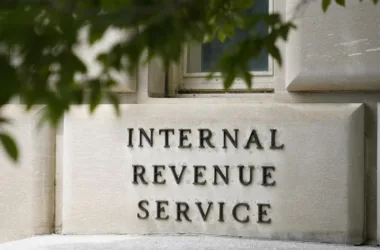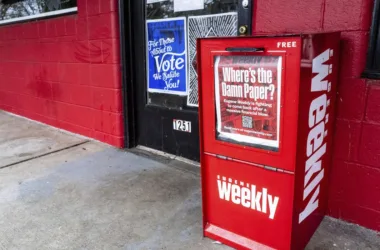Hundreds of families of overdose victims have sued Purdue Pharma over its role in the deadly opioid epidemic, but only one victim’s mother is siding with the federal government in rejecting a $6 billion bankruptcy settlement that would shield the family who owns the drug company from any civil liabilities.
Ellen Isaacs, whose son died of an opioid overdose, has joined the U.S. Trustee, the bankruptcy watchdog of the Justice Department, in opposing the deal pending before the Supreme Court that would protect the Sackler family, who made $11 billion in creating and distributing the opioid OxyContin, from future lawsuits.
The Supreme Court is scheduled to hear arguments on Dec. 4 in the case — William K. Harrington, United States Trustee, v. Purdue Pharma.
The key issue is whether Purdue Pharma‘s Chapter 11 restructuring plans can provide immunity for the Sacklers, none of whom has filed for bankruptcy.
Ms. Isaacs says the proposed settlement wouldn’t guarantee that she would receive one dollar for the loss of her son.
“This is a case where people’s children died. The perpetrators owe the victims and the nation more than money. The justice system owes us more than a forced settlement,” Ms. Isaacs’ lawyer, Michael Quinn, wrote in her court filing in support of the federal government’s position.
“The Sacklers defrauded the world about whether OxyContin was addictive, and then kept using fraud and bribery for two decades to get more people on opioids, at higher doses, for longer periods of time. Purdue even bribed an electronic medical records company to prompt doctors to prescribe more opioids. As a result, the Sacklers became billionaires and thousands of Americans were killed.”
Hundreds of victims and their families, hospitals and state governments filed thousands of lawsuits against Purdue Pharma over its aggressive marketing of OxyContin, the highly addictive pain medication cited as the starting point of the opioid epidemic, which has claimed hundreds of thousands of lives since 2000.
Purdue Pharma filed for bankruptcy in 2019 to deal with all of the lawsuits and cover its losses. Under the bankruptcy deal, the Sacklers and Purdue would provide $750 million for victims compensation, use $5.5 billion to help abate the opioid epidemic and make company documents public.
It also would release the Sackler family from third-party civil claims without the consent of potential claimants. The Sacklers for decades owned Purdue, which made and produced OxyContin, a version of Oxycodone it patented in 1996.
The U.S. Trustee challenged the agreement, and Solicitor General Elizabeth Prelogar said in her brief that the Sacklers’ release from liability is “of exceptional and unprecedented breadth.”
“The Sackler release extinguishes the claims of all opioid claimants except the United States, and therefore applies to an untold number of claimants who did not specifically consent to the release’s terms,” Ms. Prelogar wrote. “The Sackler release is not authorized by the Bankruptcy Code, constitutes an abuse of the bankruptcy system, and raises serious constitutional questions by extinguishing without consent the property rights of nondebtors against individuals or entities not themselves debtors in bankruptcy.”
The federal government says the Sackler family knew there were concerns about its drug more than a decade ago and started pulling money out of the company in what was labeled “milking.” The Justice Department estimates that nearly 250,000 people died from opioids between 1999 and 2019.
The government says the bankruptcy settlement would permit “the Sacklers, who would otherwise face claims alleging damages in the trillions, to obtain full repose while keeping billions of dollars that they siphoned from Purdue in the years before these Chapter 11 proceedings.”
In her court filing, Ms. Isaacs compared the Sackler family to a “criminal enterprise that caused a national tragedy.”
“Ms. Isaacs has more than just a pecuniary interest in her claims against the Sacklers — she seeks to hold accountable the people that ignited the opioid epidemic and killed her son. Purdue should not be allowed to extinguish that right,” said her lawyer, Mr. Quinn, who will not be arguing before the justices on Dec. 4.
Yet Ms. Isaacs stands alone among victims’ families in opposing the deal before the justices: A group of victims — those suffering from addiction and in recovery or having lost a loved one — are siding with Purdue Pharma and its lawyers, saying the settlement deal worked out among them and other creditors should be approved because it would help them financially recover from their losses.
Dede Yoder lost her retirement savings attempting to help her son — who eventually died — from his addiction. Stephanie Lubinski lost her home, their lawyers told the justices. They’re just a couple of the dozens of claimants who want the court to affirm the bankruptcy deal.
“The money from the plan would help provide instant relief and allow the families to continue to heal financially after their exposure to Purdue‘s opioid products,” their brief reads.
The case made its way to the nation’s highest court after the federal government petitioned the justices to review a settlement plan that would release the Sackler family from any civil liability in future lawsuits. It took at least four justices to agree to take up the conflict.
The court‘s ruling on the release issue could impact major bankruptcy litigation by preventing wealthy companies from creating subsidiaries and exploiting bankruptcy law loopholes.
Purdue Pharma, meanwhile, told the high court through a filing that without the release for the Sackler family, the distribution of money to creditors could be unfair or even depleted.
“Allowing a few holdout creditors to jump the queue and pursue claims subject to the releases would imperil the recovery available to all creditors,” its brief read.
It also said the billions of dollars as part of the agreement could go to saving lives and that the agreement had vast support from those with claims against Purdue Pharma.
“With zero concrete stake in this bankruptcy, the Trustee has nothing to lose if he destroys the plan. But the individuals and entities with an actual stake in the outcome would lose everything. That is why the victims with the greatest reason to seek retribution against the Sacklers — including over a hundred thousand individuals and state and local government entities across the country — overwhelmingly support the plan,” it argued.
Under the deal, Purdue Pharma would cease to exist, and Knoa Pharma would be formed and be governed by an independent board. Knoa Pharma would be tasked with combating the opioid crisis.
Lawyers for the Sackler family say the court should affirm the 2nd U.S. Circuit Court of Appeals, which approved their company’s bankruptcy agreement.
Lindsey Simon, a law professor at Emory University, said it’s not unusual for victims to be on both sides of a settlement agreement, some supporting and others opposing.
“People want different things from litigation,” she said. “Some people want money to pay for their harm, others want to prevent defendants from harming others, and some people want to make them show up in court and face their victims.”
Ms. Simon, though, noted that the settlement deal does give billions towards victims’ compensation that otherwise wouldn’t be available from Purdue Pharma due to the $6 billion the Sacklers are putting forward in the agreement.
“The deal they are cutting in this case happened because Purdue Pharma doesn’t have much money; Here, the releases came in exchange for a lot of money that wouldn’t otherwise be available to distribute,” she said.









